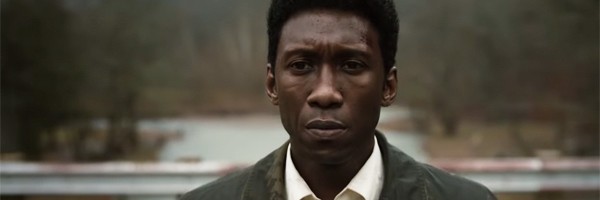The exposition in “True Detective” Season 3 almost broke the season apart for me. When you have an actor like Mahershala Ali, who can give off emotional resonance with just a facial stare, and you give him incredibly expanded dialogue, well, that’s creator Nic Pizzolatto’s ego for you.
Season 3 stubbornly focused on a subplot I couldn’t care less about, a husband and wife’s marital difficulties, with a clunky self-seriousness that the grisly B-movie tropes of Pizzolatto’s “charms” as a writer didn’t need.
The hanging questions that loomed throughout this entire season, a major improvement over the unwatchable second, but nowhere near the lightning-in-a-bottle brilliance of the first one, were all more or less answered in the last episode. If the previous episode hinted at the finale potentially tying Season 1 detectives Rust Cohle (Matthew McConaughey) and Marty Hart (Woody Harrelson) to the new case, it smartly didn’t go in that direction.
In the end, the Purcell case was interesting enough to keep our attention on the screen for the better part of eight episodes, but there also was a certain lack of satisfaction, as if this was another confirmation that Pizzolatto’s total and utter control of his mise-en-scene is a major problem. After being fired halfway through production, director Jeremy Saulnier told me in an interview last year that he jokingly felt like Pizzolatto “stabbed him in the face many times” during production. Hollywood hack Daniel Sackheim (“The Glass House” and “The X-Files”) came in to save the day for Pizzolato, which resulted in a visually dull look for this third season, despite its vehemently false insistence to its viewers that it looked fantastic. The primordial, faux-gritty look of the season was shameful and the firing of a maverick like Saulnier equally infuriating.
The season’s mysteries, surrounding two missing children, a one-eyed man (Steven Williams), haunted detectives Wayne (Mahershala Ali) and Roland (Stephen Dorff), the Hoyt corporation (Michael Rooker), and their longterm employer Harris James (Scott Shepherd) was all a coverup for the simple story of a junkie mother Lucy (Mamie Gummer) and her compromise with an equally wounded woman, Julie Purcell.
The decision to have three timelines, happening in the ‘80s, ‘90s and today, the latter of which has Wayne suffering from dementia while still trying to crack the unsolved case, resulted in hit and miss sequences. You always had the notion, in the back of your mind, that what was going on in the ‘80s and ‘90s were not as consequential to the overall crux of the story, since we knew the case was never solved and these old AARP fogies are still trying to crack it right now. The overall tension of the story was lost due to this misguided decision to concentrate so heavily on the necessary, but overly expository, flashbacks.
Pizzolatto’s interest in character is commendable, but his flaw has always been his self-seriousness about his own B-movie-inspired vision of backwoods America and the way he tries to over-complicate his narrative with nuttily overreaching ambitions. [B-/C+]






